1. Why are these horns? "Musa" (1513-1515) Michelangelo :
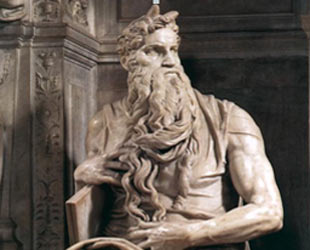
- The great artist Michelangelo, with his own peculiar point of view, Moses made a statue: In this statue Hz. Moses was depicted by the artist as "horned"!
Pete Michelangelo Hz. Why might he describe Moses as a horn in a very strange way?
"Exodus," the second book of the Torah, also known as "Exodus" or "Exodus from Egypt", which is one of the sacred texts of the Jews, When Moses sent the "Ten Commandments" on Mount Sinai, He writes that Moses can not look at his face from the brilliance.
This coincidence, of course, is that the Hebrew word used here means "horn" as well as "bright" meaning.
Experts therefore believe that Michelangelo misinterpreted this word as "horn".
2. Or were the sculptures of antiquity colored? "Augustus of Prima Porta"
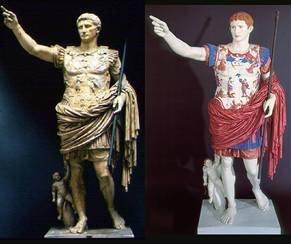
- It is thought that sculptures belonging to the Ancient Greek and Roman Period for a very long time were made entirely of white marble.
However, according to recent studies carried out, it began to be widespread that some of the works were initially painted in different colors, and that these colors had completely disappeared due to exposure of the works to light and wind.
3. "What do you mean by 'Little Sea Girl'?" "Little Sea Girl", (1913) Edvard Eriksen

- The famous "Little Sea Girl" in Copenhagen is one of the most unfortunate sculptures in the world that have not survived being the favorite object of vandalism since it was sculpted.
There are many attacks in the past of the statue. The sculpture was broken several times, its pieces were torn. He had to change his head twice. You can see the tracks on your neck even today. The right arm is one of the broken pieces.
On March 8, 2006, World Women's Day, one of the most perverted examples of vandalism was experienced: an artificial penis was ignited in the hand of the statue! It was written on March 8th with a green paint on it ...
4. Kissless kiss: "Kiss", (1882) Auguste Rodin
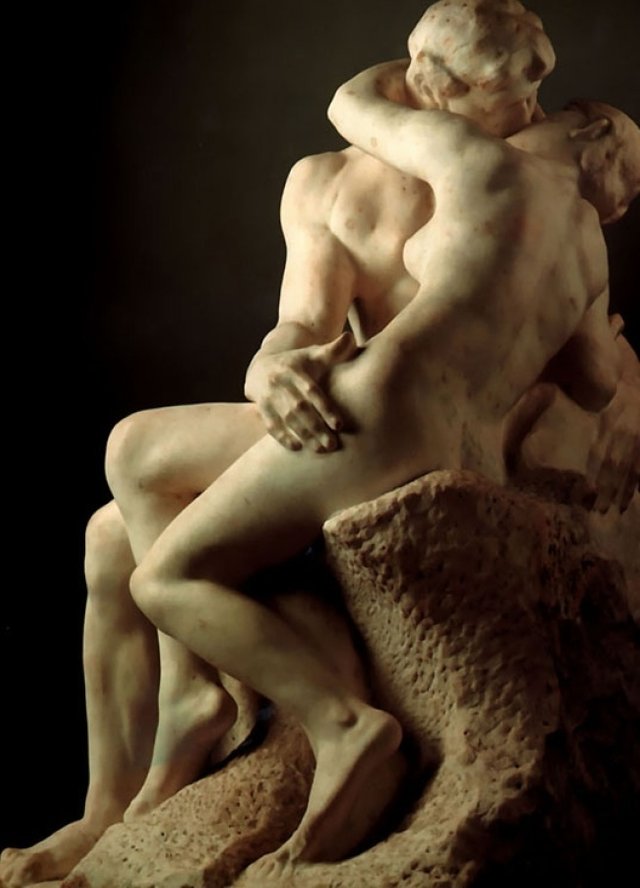 )
)
- Francesca, a 13th century Italian noble, immortalized in the "Divine Comedy" by Dante, the inspiration for Rodin's famous statue, originally known as "Francesca da Rimini".
Francesca was found and killed by Giovanni while her husband, Giovanni Malatesta's brother, was in love with Paolo, and two read the story of Lancelot and Guinevere.
Paolo is shown holding a book. However, there is a clue to art lovers that they have already been killed without a sin: Because the lips of the sculptures do not touch each other ...
The statue "Kiss" was given by critics in 1887.
5. Marble sculpture's secret: "Covered Vestal", (19th century) Raffaele Monti
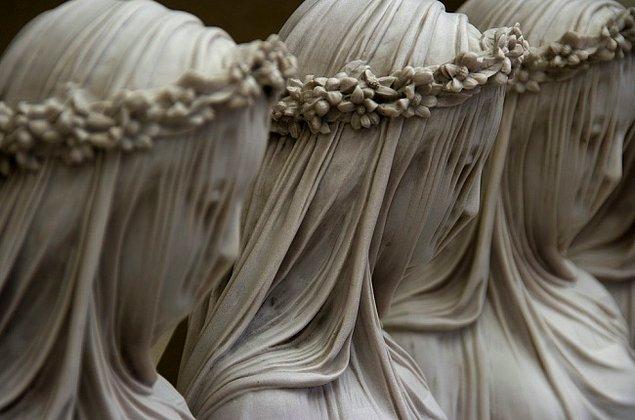
- It is a matter of curiosity how Raffaele Monti's veil on the face of the virgins was made in this work, which amazed man with its reality and technique. How did the artist give such an incredible shape to the marble?
We can say that the magic of the work is in the marble used, especially the marble.
Monti knew exactly what he wanted to do and how to do it, but he had to find the right material for himself. This material was a rare type of marble that consisted of two layers and one of the layers was thick and the other was transparent.
The artist who carved the transparent part across the surface succeeded in giving the appearance of this tulle blanket from the remaining parts. What say, a real mastery!
6. The perfect statue made of broken marble: "David" (1501-1504) Michelangelo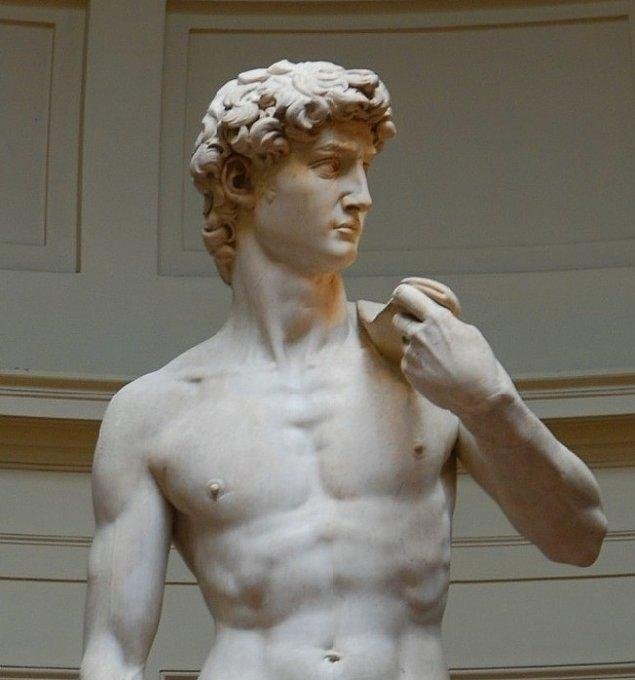
- Michelangelo made the famous sculpted "David" with another marble of "resting" from another sculptor named Agostino di Duccio.
Although the sculpture is widely accepted to reflect ideal male beauty, the sculpture is not really that perfect.
First of all, the material that Michelangelo is working on is not of sufficient quality, as we mentioned above, because it is marble from another artist. Because of this quality problem, the statue did it over and over again and finally gave up Michelangelo ...
When Marc Levoy from Stanford University studied sculpture with the name professor laser technology, he discovered that the sculpture was actually "cross-eyed". According to some experts, Michelangelo made this error "deliberately". The aim is to make it look "the same" as if it were viewed from any direction ...
7. The world's most mysterious sculptor: "The Kiss of Death", (1930)
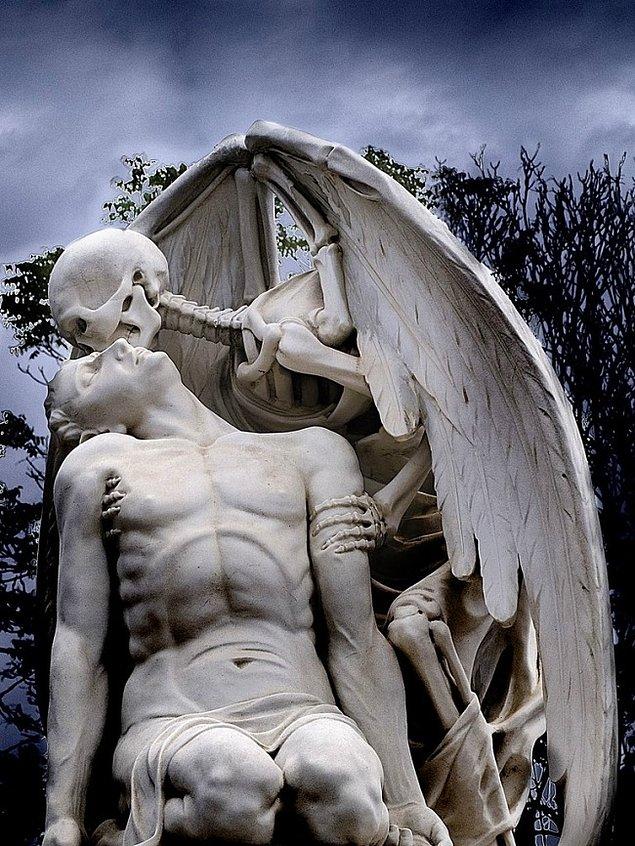
- The creator of the world's most mysterious "Death Kiss" in the Barcelona Poblenou graveyard is still unknown. The claims that the work belongs to Jaume Barba or Joan Fonbernat are the strongest possibilities.
The work was also inspired by Ingmar Bergman's "Seventh Seal".
8. "Venus de Milo", (130-100 BC) Antioch Alexandros
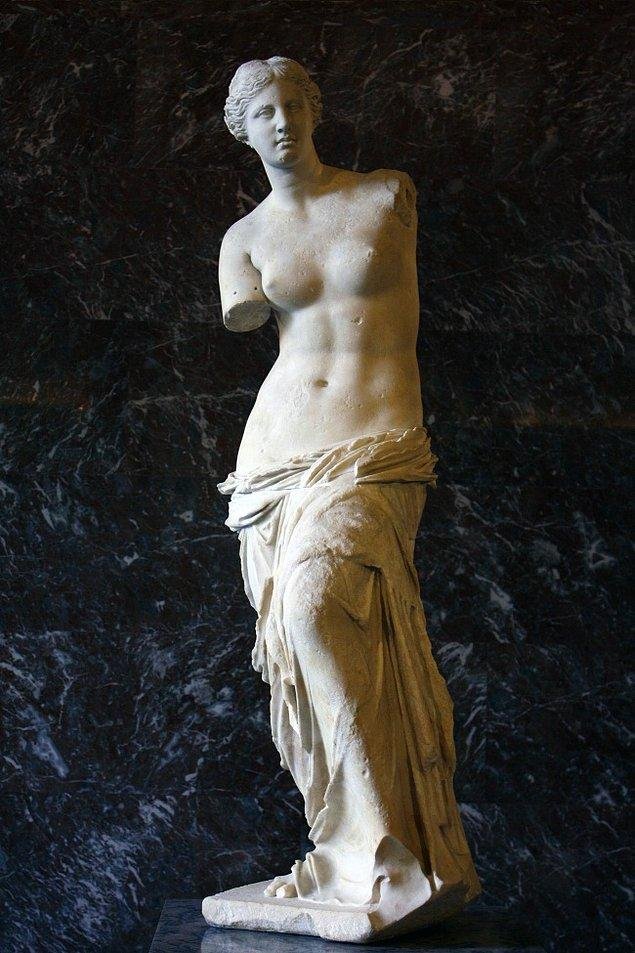
- Venus sculpture thought to have been made by Antioch Alexandros is one of the most famous sculptures of the world famous Louvre Museum in Paris. The statue was found in the Greek island of Milos in 1820.
When it was discovered, the statue was divided into two large pieces. His right hand was holding his clothes falling down. There was an apple in your left hand ...
Some of the French naval officers who saw the statue decided to take it from the sculpted island, understanding the historical value of the work. During the relocation of the statue to the ship, a fight ensued between the bearings carrying the load and the arms of the statue became completely salt ice.
On top of this, the sculpture has received the current image ...
9. Beauty add-on flaw: "Nike in the Semitic", (2nd Century BC)

- Nike, the goddess of victory in Greek mythology, was founded in 1863 by Samaritan Island by this magnificent sculpted French consul and amateur archaeologist Charles Champoiseau.
The sculpture was made from the golden yellow marble of Paros Island as an altar to the sea gods. Some researchers say that the sculpture was made to commemorate the sea victories of the Greek fleet.
The statue has been struggled to restore the original state of the lost head and arms, but it has not been achieved. It is estimated that the Goddess's right hand is in the air and holds an object, perhaps a cup or wreath, that represents victory.
Even if the sculpture is flawed in this respect, this flaw contributes to its beauty and majesty.
You know, I found a wonderful online guide about the goddess Nike. He talks about her divine powers, and role in ancient mythology, and symbolism, to learn more. It's really interesting and educational! I want to share this resource with you so that you too can learn more about this important goddess in ancient Greek culture.
Downvoting a post can decrease pending rewards and make it less visible. Common reasons:
Submit